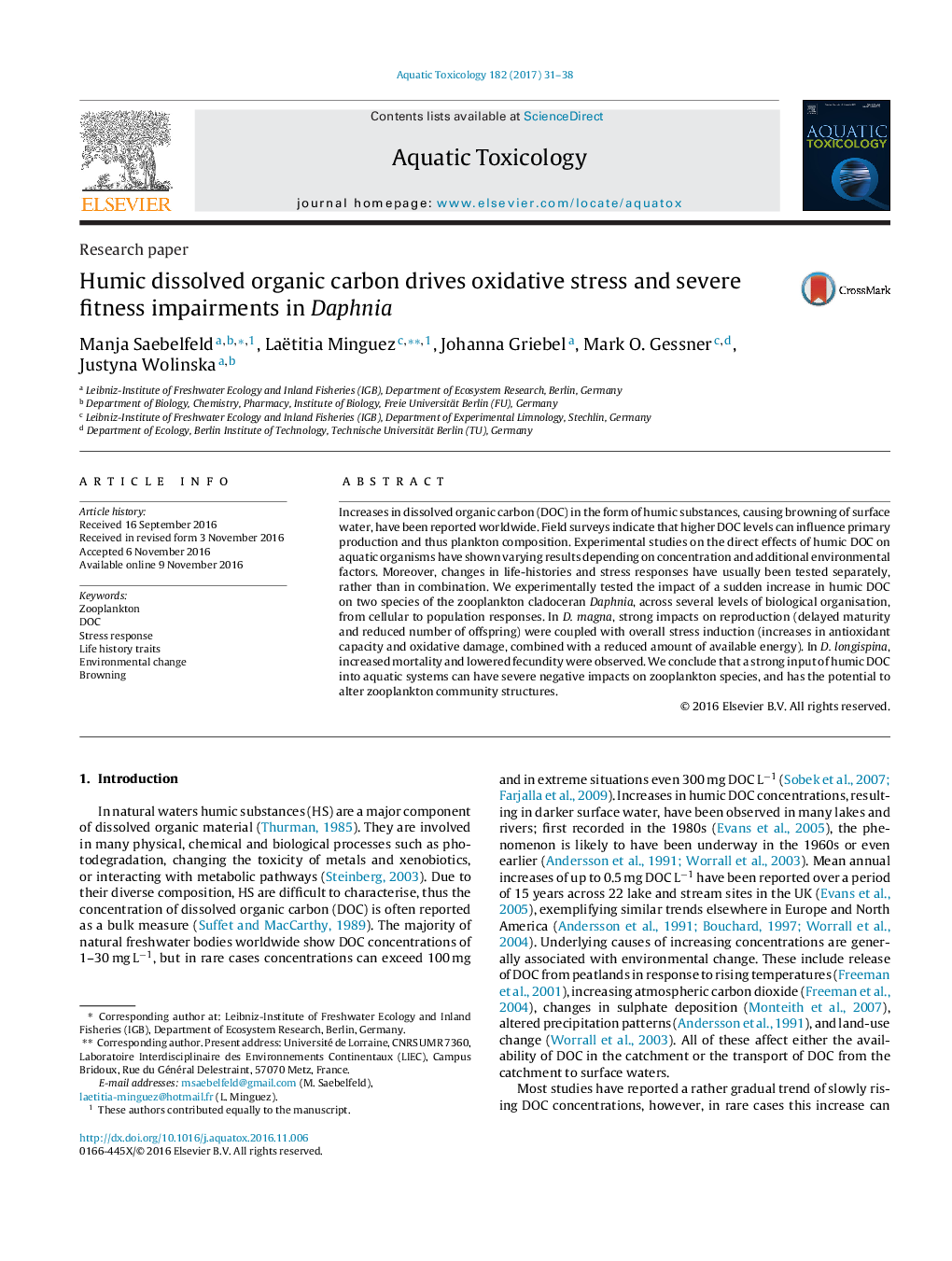| کد مقاله | کد نشریه | سال انتشار | مقاله انگلیسی | نسخه تمام متن |
|---|---|---|---|---|
| 5764337 | 1625923 | 2017 | 8 صفحه PDF | دانلود رایگان |
- Impact of sudden humic DOC input was tested experimentally on two Daphnia species.
- Both species were strongly affected at several levels of biological organisation.
- D. magna experienced oxidative stress and reproductive impairments.
- D. longispina experienced reproductive impairments and increased mortality.
- Observed responses suggest that increased DOC could alter zooplankton communities.
Increases in dissolved organic carbon (DOC) in the form of humic substances, causing browning of surface water, have been reported worldwide. Field surveys indicate that higher DOC levels can influence primary production and thus plankton composition. Experimental studies on the direct effects of humic DOC on aquatic organisms have shown varying results depending on concentration and additional environmental factors. Moreover, changes in life-histories and stress responses have usually been tested separately, rather than in combination. We experimentally tested the impact of a sudden increase in humic DOC on two species of the zooplankton cladoceran Daphnia, across several levels of biological organisation, from cellular to population responses. In D. magna, strong impacts on reproduction (delayed maturity and reduced number of offspring) were coupled with overall stress induction (increases in antioxidant capacity and oxidative damage, combined with a reduced amount of available energy). In D. longispina, increased mortality and lowered fecundity were observed. We conclude that a strong input of humic DOC into aquatic systems can have severe negative impacts on zooplankton species, and has the potential to alter zooplankton community structures.
Journal: Aquatic Toxicology - Volume 182, January 2017, Pages 31-38
